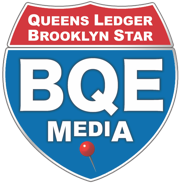Education advocates continue to criticize the Education Department for what they say is a failure to remove light fixtures containing polychlorinated biphenyl (PCBs) from public schools.
Congress banned PCB production in 1978 due to toxicity and long-term health effects.
In 2011, the City Council passed Local Law 68, requiring the Department of Education (DOE) to provide parents with a schedule for PCB light removal, including why it is necessary.
In a letter recently sent to New York City parents, DOE said it will remove the lights in schools across the city within the next 10 years.
“In 1978, the federal government banned the manufacture of PCBs in building materials,” the DOE letter states, “but, until recently, provided little guidance on how to identify and handle the materials in existing buildings.”
Parents and advocates rallied in front of P.S. 195 in Rosedale on Wednesday, May 16, calling on DOE to make schools in the area a priority for PCB abatement.
Christina Giorgio, a staff attorney with New York Lawyers for the Public Interest, which is spearheading the removal campaign, said PCB substance can cause harmful effects such as cancer, and learning and behavioral disabilities.
She said the letter DOE mailed to parents failed to adequately explain the need for the PCB removal and a specific timeline for when it would happen, as was called for by the City Council.
“If the city really did prioritize the welfare of these children plus fiscal responsibility, they would replace these lights immediately and not wait nine years and certainly not send out a letter to parents giving them no information about when the lights are going to be removed,” Giorgio said at the rally.
She referenced a list of the top 10 toxins most likely to contribute to autism and other neurological disorders released by the Mt. Sinai Children’s Environmental Health Center, which put PCBs in third place.
However, according to the Health Department, there is no immediate risk resulting from long-term exposure to PCBs. In addition, PCBs exist in other sources outside schools, such as soil, air, water and food due to handling and disposal in the past.
Marge Feinberg, a DOE representative, said the city is spending $800 million on a PCB removal process that is unprecedented in the United States.
The program so far targeted five pilot schools in the city, among them are P.S. 309 in Bushwick and P.S. 183 in Far Rockaway. According to the test results of the pilot program, elevated PCB levels were found in air tests in four of the five schools.
“While some people think we should spend more and do this faster, we continue to believe this is an aggressive, environmentally responsible plan that will cause minimum disruption to student learning and generate significant energy savings for the city and taxpayers in the long run,” Feinberg said.
“Our work will take place outside of school hours, to minimize the disruption to students and staff,” she added, echoing DOE’s letter to parents.
But speakers are the rally were dissatisfied, saying the removal could be done on weekends or over vacations.
“The DOE is not doing enough to change the situation that they know is toxic,” said Jean Sassine, of the Queens Chapter of New York Communities for Change, who has two kids enrolled at P.S. 195. “We’re concerned parents, concerned about the health of our children and the health of our neighbors’ children.”
Sassine added that there is a more cost-effective way to remove the lights.
“We can broker out to different firms and get all of them done in less than two years,” he said.

